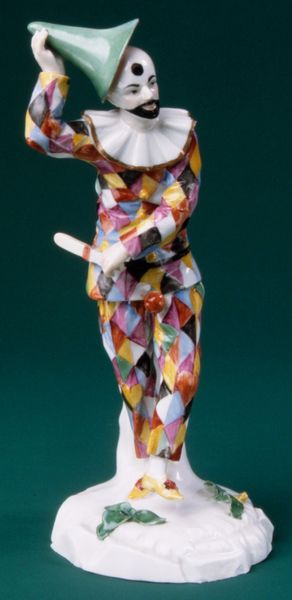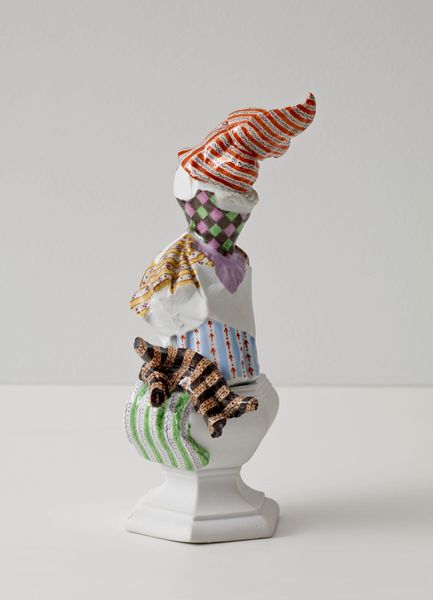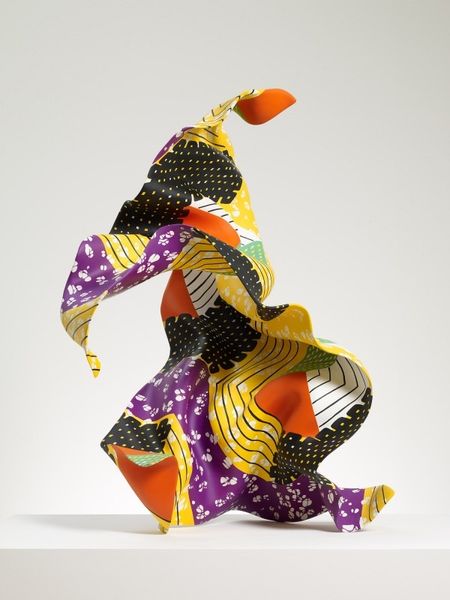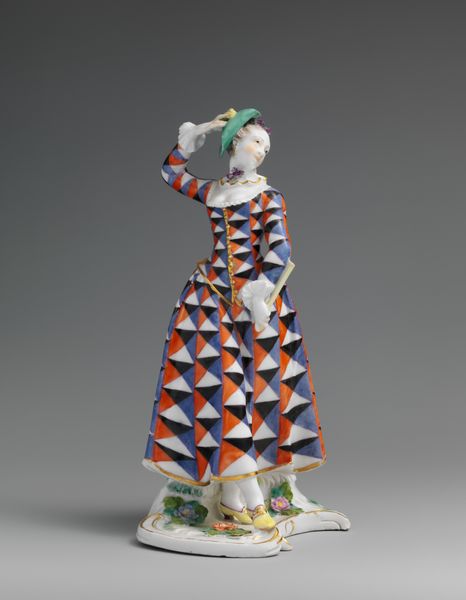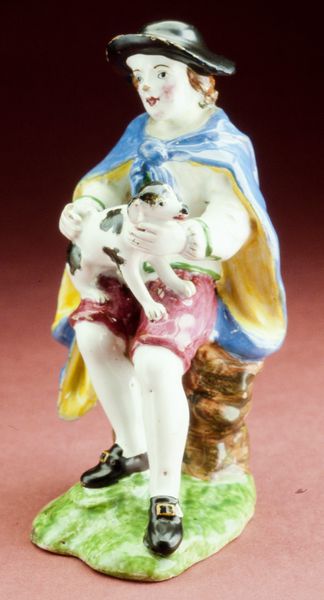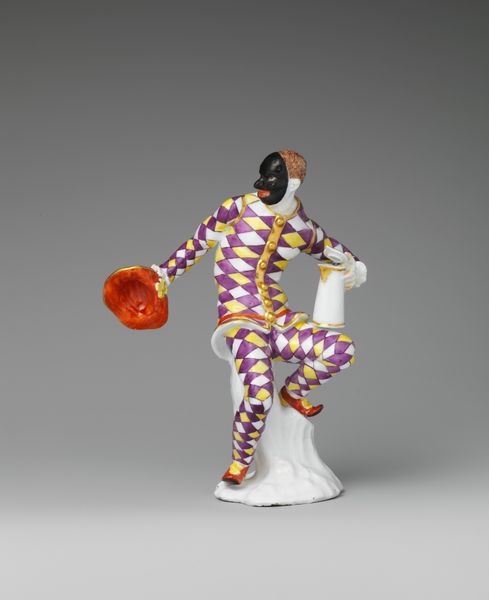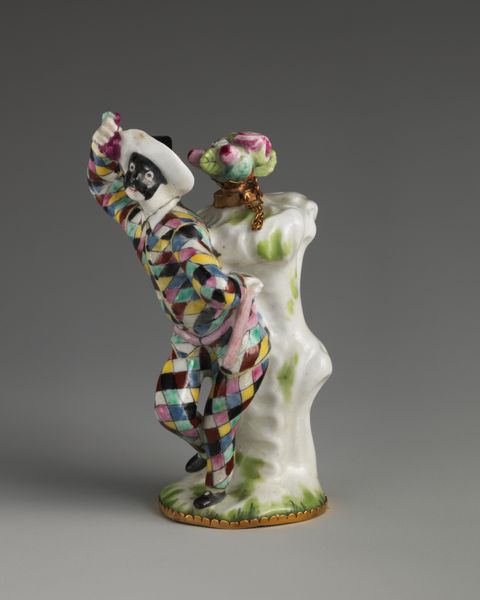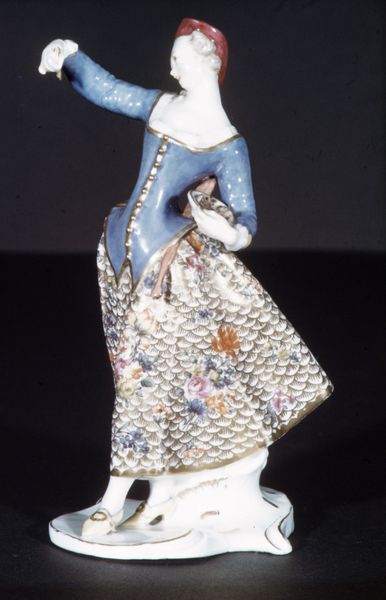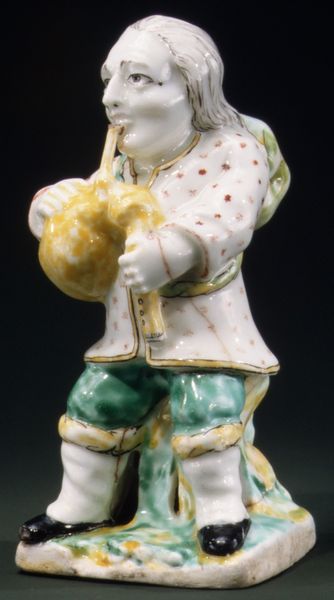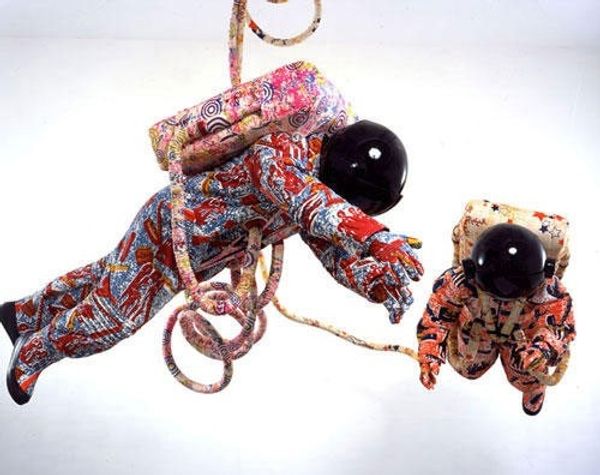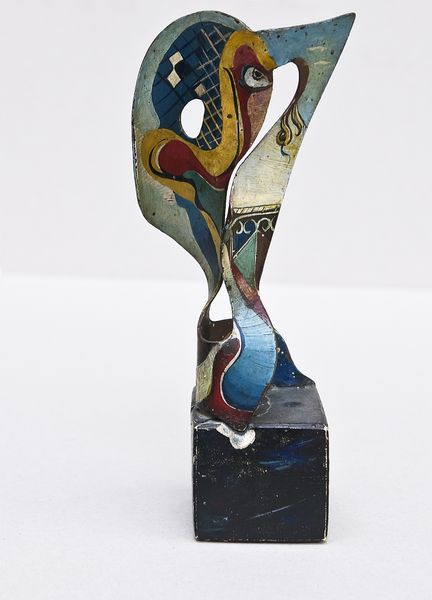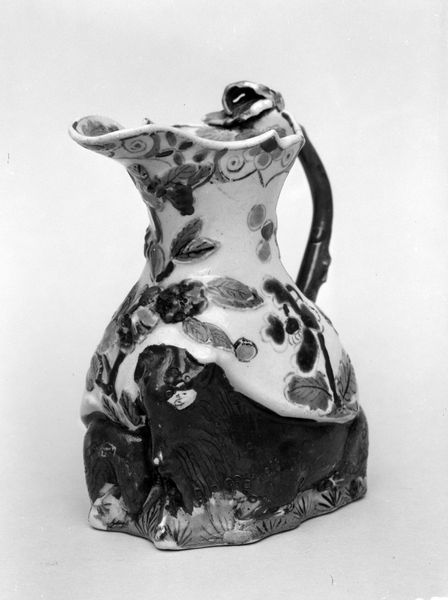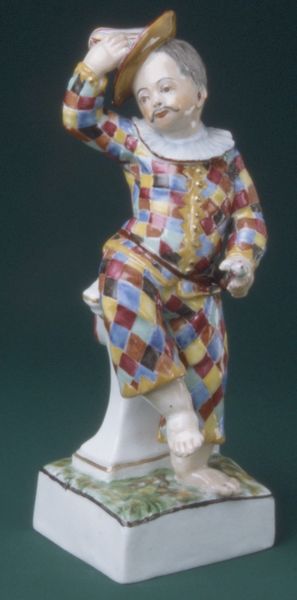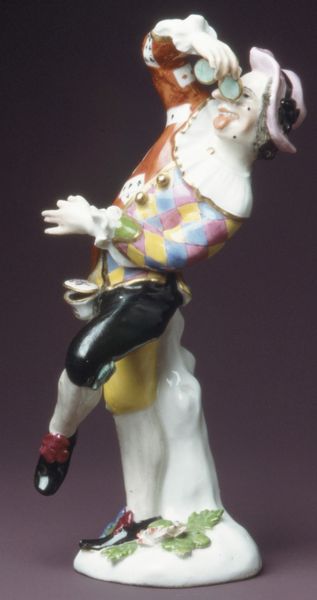
ceramic, porcelain, sculpture
#
ceramic
#
porcelain
#
figuration
#
sculpture
#
decorative-art
#
rococo
Dimensions: Height: 6 5/8 in. (16.8 cm)
Copyright: Public Domain
Editor: So, this delightful porcelain sculpture, "Frightened Harlequin," was created by Meissen Manufactory between 1735 and 1745. He's currently housed at the Metropolitan Museum of Art. I am really intrigued by his…unsettled energy, and that contrast between the vibrant costume and his distressed face. What do you see in this piece, beyond just a frightened clown? Curator: The figure's theatrical garb points to a deeper cultural commentary, doesn't it? Harlequin, traditionally a mischievous and comedic character in Commedia dell'arte, appears here stripped of his usual bravado. The diamond pattern, usually a symbol of playful trickery, clashes with his recoiling posture. What do you think that discordance represents? Editor: Maybe it shows that appearances can be deceiving? He looks colorful, but feels vulnerable. Curator: Precisely. The figure taps into a sense of societal unease masked by superficial glamour. Think of the Rococo period – elaborate displays of wealth and frivolity, yet beneath the surface, anxieties simmered about social mobility and political instability. He's a symbol of hidden vulnerabilities, isn’t he? And his fright... what fright, do you think, has him so? Editor: Perhaps fear of losing his position? Or maybe just the general precariousness of life, even for those who seem privileged. Curator: Exactly! The fragility of the porcelain itself mirrors that precariousness. Remember too that clowns in other cultural contexts often symbolize the plight of the marginalized, don't they? Harlequin's fright might thus be a stand-in for the anxieties of an entire class. So much weight, emotional weight in just a single image. What will you take away from this reflection? Editor: I see how the symbols here tell a story much richer than the surface-level appearance. I'll never look at a Harlequin the same way. Curator: Nor I. Symbols do shape and hold our history, don't they?
Comments
No comments
Be the first to comment and join the conversation on the ultimate creative platform.
